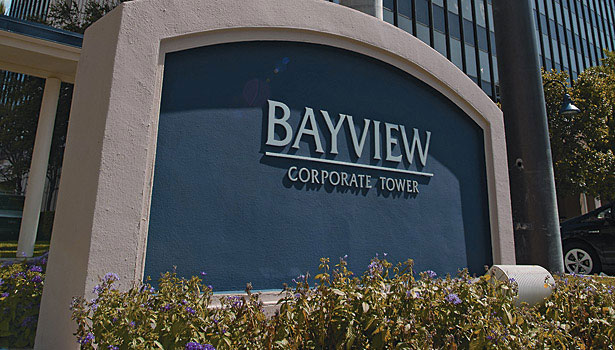In real estate it’s all about location. But in south Florida, where beautiful views and gorgeous weather are the norm, building owners need to find ways to differentiate themselves and bring in tenants.
That challenge motivates Bunnie Willis in her role as vice president and senior property manager for the 12-story BayView Corporate Tower in Fort Lauderdale, FL. Built in 1973, the 412,000-sq-ft building houses 13 corporate tenants, including AT&T, Whole Foods, and Landmark Worldwide.
In July 2011, during a routine evaluation of the BayView Tower’s mechanical systems, Willis learned that she could provide her tenants with cleaner, healthier air by making modest upgrades to the building’s HVAC systems.
A key component in the HVAC system upgrades was the addition of ultraviolet-C (UV-C) lamps. Used since the 1990s to improve IAQ and later to improve heat exchange efficiency, boost airflow, and reduce maintenance, the UV-C wavelength eliminates and further prevents microbial and organic materials buildup on HVAC cooling coils, air filters, duct surfaces, and in drain pans.
However, it is the ability to potentially slash between 10% to 25% of HVAC energy that drives many installations, according to Bruce Fontaine, vice president of business development and operations at Sustainable Management Solutions, a national energy efficiency consultancy firm in Pompano Beach, FL.
Fontaine’s team recommended a UV-C solution installation at BayView. An independent audit documented as much as a 47% increase in the building’s airflow levels following the installation, which also reduced enough energy use to pay for the upgrade in just three months. The audit not only showed an increase in airflow, but also a reduction in both fan and refrigeration-system energy consumption.
Following the recommendation to add UV-C lights, Willis did her homework and learned more. She met with the building’s chief engineer, Miki Minic, who had successfully used UV-C lamp systems in several other buildings.
“There are many benefits of UV-C,” says Minic. “Most important is the improvement to indoor air quality levels, so tenants enjoy cleaner, healthier air.”
Willis also visited similar properties in the area with HVAC UV lighting installations.
“Following my research and meeting with other commercial property managers who had UV lighting installed, I was sold on the technology’s benefits,” she says.
With two cooling towers, three chillers, and 24 AHUs (two per floor), the UV installation at the BayView Corporate Tower presented some challenges, said Darren Ambrosi, a project manager with Sustainable Management Solutions.
“The existing AHUs were 25 years old and offered limited access to the evaporators,” he said. “Because of the tight access, we recommended the RLM Xtreme high-output, fixtureless UV-C lamp system from UV Resources. This modern UV-C system installs in about half the time of conventional fixtures and offers flexible configurations such as those required at BayView.”
As a result of the flexibility of the fixtureless UV-C lamp system, the retrofits were completed in just four days using only two installers.
“The overall transformation in efficiency was incredible,” said Fontaine. “Airflow levels increased by 47% in one air handler, or roughly 10,000 cfm, the coils look brand new and the condensate pans cleaned up tremendously.”
To evaluate the success of the installation, Willis commissioned an independent performance test by HVAC consultant John Kneiss, president of K & P Mechanical Solutions in Dania, FL.
“Our goal was to measure the performance of the HVAC system cooling coil before and after the UV fixtures were installed,” Kneiss explained.
During the velocity profile tests conducted prior to the RLM Xtreme installations, Kneiss discovered varying levels of velocity, indicating that some parts of the coil were much dirtier than others.
“It was easy to see certain sections had high velocities and other sections were low, indicating a build-up of debris in the lower velocity areas,” he said. “The velocity readings in our baseline measurements were not stable.”
When Kneiss returned following the installation of the UV lighting system, he used the same test instruments and procedures and found the air velocity readings to be much more stable across the entire coil surface.
“Our opinion after reviewing the results and differences was that the cooling coil performance was significantly improved from our first set of readings,” Kneiss recalls. “Coil velocities were more even throughout the coil, and there was an improvement of the off-coil dew point as well. For us in south Florida, that is a major benefit.”
As for Willis, she was so pleased with the results that she plans future use of UV-C technology and the RLM-Xtreme.
“Within one month, we saw an immediate reduction in our energy costs, which has remained consistent since the installation,” explains Willis. “I believe so strongly in this improvement that we are getting ready to do it at one of our other properties in Doral, FL.”




